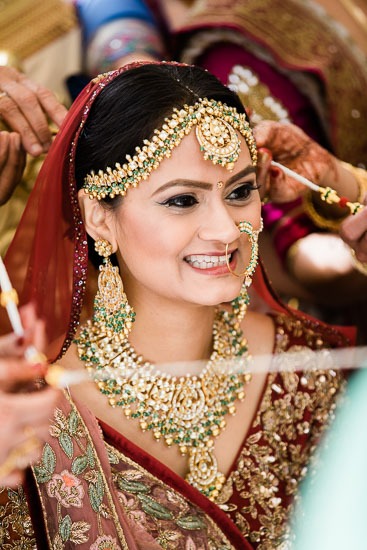
A Complete Indian Wedding Guide
Whether you have attended an Indian wedding or not, the chances are that you must have heard of it due to its grand and extensive celebrations.
Indian weddings are vibrant, culture-rich, intricately planned festivities full of traditions and celebrations.
They are known for their bright colors, singing, dancing, Indian wedding dresses, elaborate rituals and traditions, and functions lasting for several days.
Watching those lively and vibrant pictures of Indian weddings on the internet always leaves you mesmerized.
If you are throwing your own big-fat Indian wedding or was invited to one, there is no need to be overwhelmed as we have made this complete guide to tell you exactly what to expect.
Indian Wedding Traditions
Wedding traditions are a significant part of Indian culture. Although in many cultures, wedding traditions are long forgotten, that’s not the case with Indian weddings.
South Asian wedding expert Jignasa Patel explained the Indian wedding as, “A Hindu wedding lies somewhere between the couple’s expectations while blending their family traditions.”
Let’s have a look at some of the critical Indian Wedding traditions!
The Guest List
The guest list of an Indian wedding deserves a separate section in this article; this guest list isn’t your typical wedding guest list. But, as I mentioned, everything in an Indian wedding is grand, and so is this list.
The Guestlist has hundreds to thousands of guests; weddings are lavish and huge events in India.
The whole extended family, friends and their families, acquaintances- almost everyone you know is invited.
Of course, not all weddings are the same, some of them have fewer guests, but most of the time, there are hundreds of guests at an Indian wedding.
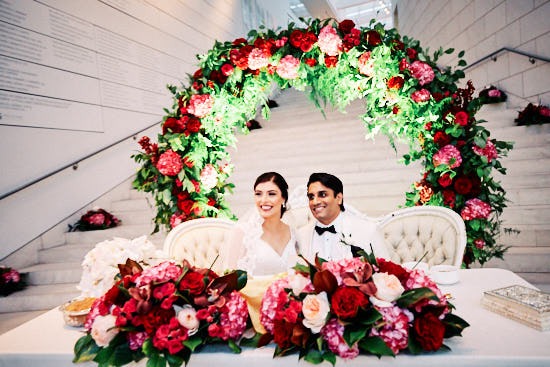
Misri – the Ring Ceremony
The wedding starts with a function of Misri, or you can call it an engagement.
During this event, the couple exchanges their wedding rings and welcomes each other with garlands, and both the families exchange sweets and gifts.
This event also has a dinner party for friends and families.
Misri is a Hindu word for sugar rock; the groom’s parents present a basket of misri to the bride representing that her future brings sweetness.
This is why the event was named Misri; however, modern Indian weddings focus on the engagement ceremony and the dinner party more.
Henna Party
Henna is a significant part of Indian culture; it is an intricate artwork that takes several hours and effort to get done.
Before the wedding ceremony, the bride’s hands and feet are filled with beautiful henna designs.
The Henna party is where all the female relatives and friends of the bride get their henna done; it also involves music, dancing, and lots of pictures!
Sangeet
This is the most happening event of the whole wedding, even more than the wedding day itself.
The families and friends of the couple get together for dancing, singing, and some traditional rituals.
Usually, there is a singing and dance competition between both the families and they get really competitive.
Both families start their dance practices months before the actual event to perform on this day, and some of them even hire a choreographer to ensure everything goes perfect.
This event involves lots of color, music, laughter, and delicious Indian food.
The bride and groom’s families perform Indian traditional dances, and the couple also joins them.
Women wear lehnga choli, sari, colorful and shiny outfits, whereas the men look dapper in their shalwar suit.
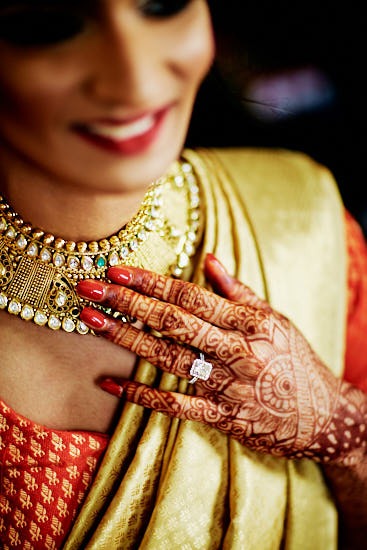
Haldi Ceremony
Before moving on to the wedding, there is a tradition of having a Haldi ceremony in the morning.
A paste of turmeric, gram flour, and sandalwood is applied over the bride and groom’s skin.
Turmeric is known to have many health and skin benefits, so it helps in moisturizing and calming the couple’s skin before the big event.
There is also a Hindu belief that the paste of turmeric paste plays a role in blessing the bride and groom.
Groom’s Arrival or Baraat
Baraat is referred to the groom’s arrival, which is a celebration itself.
The bride’s side guests wait for their arrival with flowers in their hands and give them a warm welcome.
The groom makes a grand entry by riding on a white horse, with friends and family dancing and singing along the way.
Indian Wedding Ceremony
After a long week of wedding festivities, finally comes the actual ceremony!
This event is also not that straightforward; there are many rituals involved for the whole event.
This event occurs at a specific place called Mandap, where most of the wedding rituals are performed, and the couple is wed.
In the center of Mandap, there is a ceremonial fire that plays the most crucial role in the validity of the wedding.
The wedding starts with Kanya Daan, where the father gives her daughter away. The wedding ceremony cannot proceed without this step.
Mangala Sutra & Sindhoor
Think of it as a marriage contract; the groom ties a necklace of red, black, and gold beads around the bride’s neck and adorns her hair partition with a red powder called sindhoor.
This necklace is called Mangala sutra, which is said to have the blessings of the Hindu goddess of fortune, prosperity, and wealth.
She has to wear these two things throughout her married life as a symbol of being a married woman.
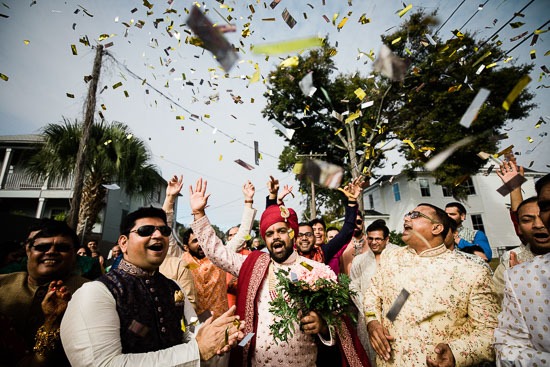
Reception
The reception is the finale of the wedding, which is as grand as other events.
There are a lot of decorative displays and decorations. The bride and groom are mainly at the center of the stage, where the whole family gets their pictures done.
It involves excellent food, laughter, music, some more dance performances, speeches, and much more.
No Box Gifts
It might sound odd not to bring a gift to a Wedding, but Indian weddings request no box gifts.
Instead, there is a money box at the ceremony where the guests place their monetary gifts wrapped in a traditional money envelope.
This is standard practice in all Indian Weddings, and all the guests bring their monetary gifts at the wedding.
Indian Wedding Dresses
What to wear to the wedding has to be the most important question because the attire is a big deal in Indian weddings.
From the dress to makeup to accessories, everything needs to be on point for the Indian wedding guests.
There is a specific dress code for each event, and people don’t usually walk in wearing something casual.
On the other hand, the bride has to do Solah Singhar, which is a 16-piece wedding attire that usually includes clothes, makeup, and jewelry.
The Indian Bridal Dress
The bride’s dress always has a special place in the whole wedding irrespective of the culture.
The bride is supposed to wear a red color, and they are usually seen wearing a heavy and ornate red and gold lehenga of her choosing.
However, we have witnessed brides from different cultures wearing white; in Hinduism, the white color is for funerals or widows and is never considered a color for the wedding.
Red is a symbol of purity, fertility, and wealth in Indian culture.
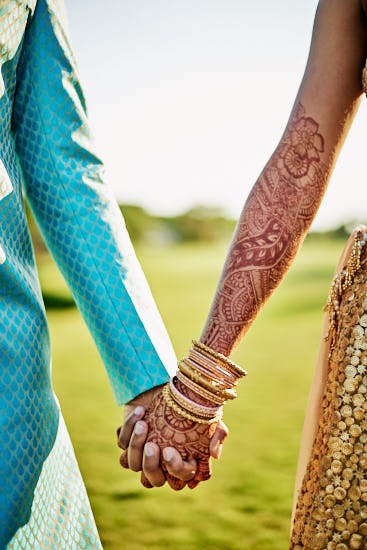
Indian Matching Accessories
The bride wears heavy jewelry that matches the dress and is primarily gold.
There is a notable piece in her jewelry called Mangtikka, which is a giant headpiece that she wears through the part of her hair.
Traditionally, the brides are supposed to wear red lipstick, but nowadays, brides go for a different glam that does not necessarily match the dress.
Indian Wedding Hairstyles are mostly tied up in the buns, with flowers wrapped around them.
Indian Wedding Guests
The guests usually dress in loud and bright colors. Women typically wear saris or lehengas with matching jewelry and makeup, whereas the men wear kurta shalwar.
Most women wear bindis on their forehead, which is another big part of their culture.
Groom’s Attire
In Indian wedding dresses, the groom’s attire isn’t as elaborate as the bride’s, but they usually wear a sherwani, turban, and a Mojari, which is a specific type of shoe.
Wrapping Up
Reading this most must have taken you to a virtual trip of an Indian wedding, and now you know what to expect from it.
Whether the celebration is grand or not, every culture has its own wedding traditions and is considered a special and emotional event.
Indian weddings are mostly known for their vibrant culture, majestic environment, grand celebrations, and superb cuisine.
If anyone attends an Indian wedding even once in their lifetime, they will surely remember and cherish the unique experience forever.
We hope that now you have a pretty good idea about Indian weddings traditions after reading A Complete Indian Wedding Guide.
We have many years of experience with Indian, South Asian Weddings, and multi-cultural weddings, where many traditions come together on the wedding day.
We even wear a Kurta pajama to blend in with the guests.
Don’t know where to start? Book a call and we go from there!
We also have other posts that can help you with your wedding preparations.
Visit our Indian Weddings page for tons of Indian wedding photos and videos!
Check out some of our traditional wedding articles Mackey House – Savannah Wedding Venue, 12 Wedding Traditions You Should Know About, The Mansion at Forsyth Park, An Exquisite Savannah Wedding Venue, and Ford Plantation – Where Your Wedding Dreams Come True!